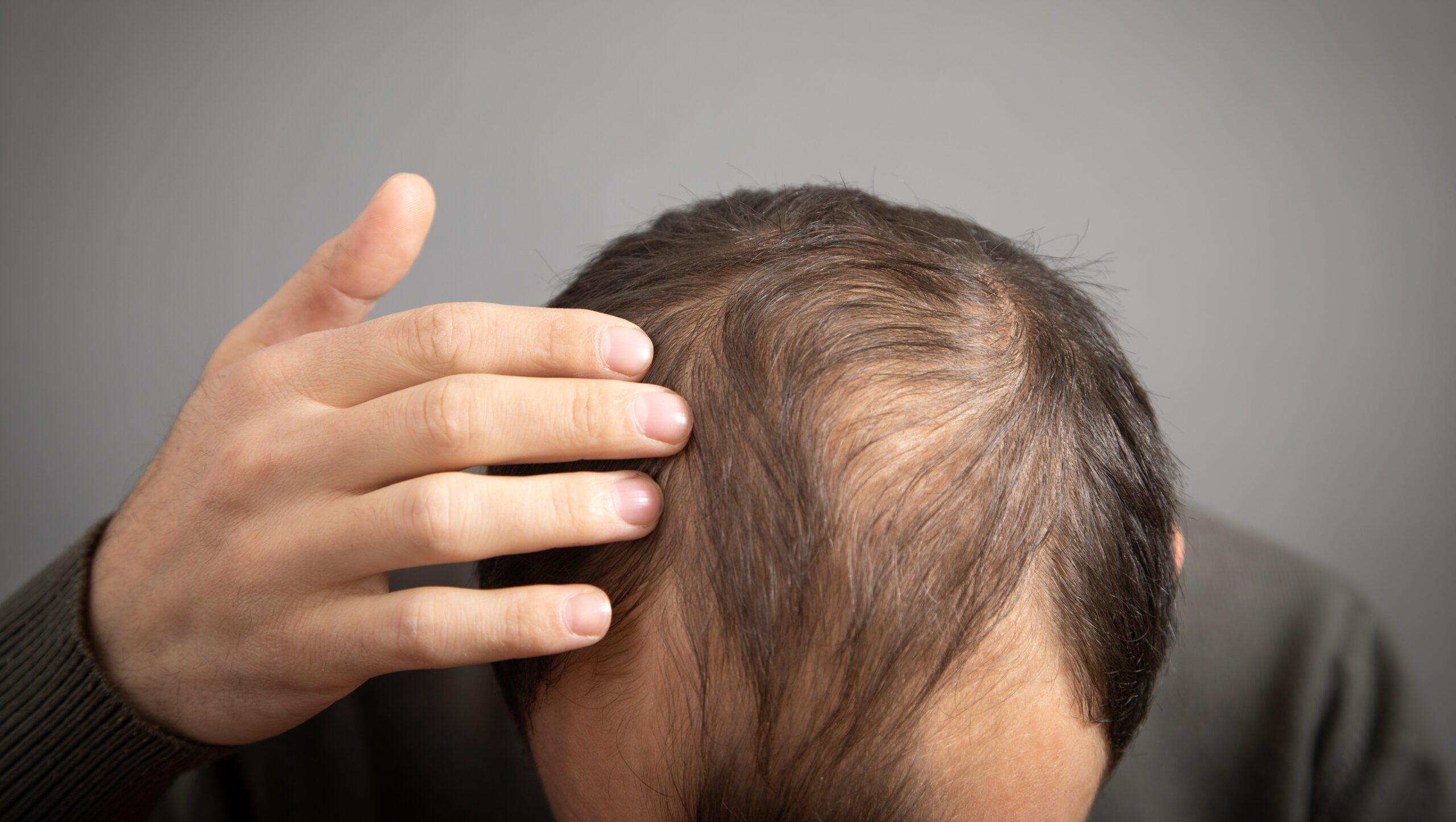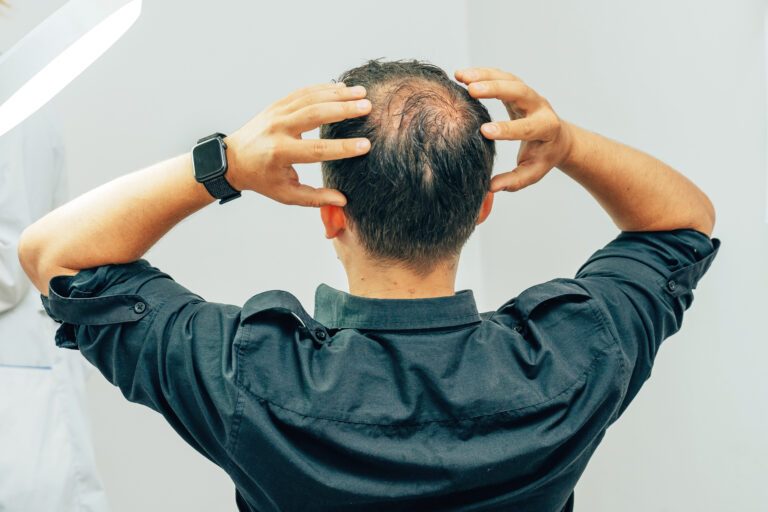Hair Transplants: Everything You Need to Know Before Getting One
Every year, more than 650,000 men and women get hair transplant surgery.
With modern medicine and advanced tech, the procedure offers success rates of 85% to 95% and survival rates of 90% to well over 100%. It’s one of the safest cosmetic surgeries to date, with minimal risks.
If you’re planning to get a hair transplant, you’re in the right place. This article discusses everything you need to know about hair transplants, including procedure type, risks, recovery period, and more.
What Is a Hair Transplant?
A hair transplant, also known as hair transplantation or hair transplant surgery, is a procedure in which hair is moved from a donor area (usually at the occipital region at the back of the head) to a bald or balding part of the body.
This procedure is primarily used to treat male pattern baldness, but it can also restore eyebrows, eyelashes, pubic hair, beard hair, and chest hair, and fill in scars caused by surgery or accidents. It’s minimally invasive and mostly painless, with a quick recovery time of one to two weeks, depending on the method used.
Hair transplantation is considered cosmetic surgery. It’s been around since the 1950s, but the techniques used then and now are vastly different.
Hair Transplant Methods: FUE vs. FUT
Hair transplantation comes in two types: Follicular Unit Extraction (FUE) and Follicular Unit Transplant (FUT).
The best option depends on individual conditions, medical history, and desired results. Astute HT surgeons are aware of the advantages and disadvantages of each and make an informed decision on behalf of the patient.
Though both have similar effectiveness and success rates, the method in which the transplantation is performed is vastly different. Let’s take a look at the differences between the two:
Follicular Unit Extraction (FUE)
FUE is the most desirable and common type of hair transplant due to its potential advantages.
In this procedure, the donor area is trimmed to 1 to 2 mm in length and follicular units are individually extracted with a specialized surgical device.
Depending on the patient’s physical state and the amount of hair transplanted, FUE can take six to ten hours to complete. If more than 2500 grafts are required, the patient will be asked to come back the next day or within the next few days.
Patients are placed under local anesthesia or general anesthesia during the procedure, so it’s completely painless.
With local anesthesia, patients are wide-awake, watching a movie or reading a book to keep themselves entertained. Under general anesthesia, patients are asleep.
General anesthesia isn’t the preferred anesthesia of HT surgeons, but it can be administered to patients who are scared of needles or unable to stay still during an operation. After the operation, the patient may experience nausea and vomiting.
Pros of FUE
- Short recovery time
- Little to no bleeding during and after surgery
- Little to no pain during and after surgery
- Doesn’t leave noticeable scarring
- Doesn’t require the removal of stitches
- Increased number of harvestable grafts
- Surgeon can target hair outside the donor site (i.e., chest, back, beard, parietal scalp, public area, etc.)
Cons of FUE
- Take two to four hours longer than FUT
- More expensive than FUE
- Risk of overharvesting
Follicular Unit Transplant (FUT)
The FUT procedure is a bit more complicated than FUE.
The surgery begins with the surgeon cutting a strip of hair-bearing skin from an anesthetized area on the scalp. The strip is then placed under a high-powered microscope to help the surgeon pluck out individual hair units from the extracted skin.
The harvested grafts are placed in a mixture of Hypothermasol and ATP (adenosine 5′-triphosphate) until the lead surgeon is ready to perform the transplant.
As grafts get extracted from the strip, the donor area is stitched. The procedure leaves a prominent scar of varying lengths, usually between 1mm and 2 mm in width. Surgeons proactively cover the area with surrounding hair to hide the incision.
FUT takes less time than FUE. Depending on the size of the area being treated, the procedure can take between four to six hours. Small defects of up to 300 follicular units take less than two hours.
The stitching will need to be removed after 10 to 14 days. The patient may get a haircut 48 hours after the removal of the sutures.
Pros of FUT
- Minimal risk of follicle damage and overharvesting
- Reportedly higher growth rate compared to FUE
- Often cheaper than FUE
- Doesn’t take as long as FUE; usually done in one session
Cons of FUT
- Leaves a visible linear scar
- Longer recovery time
- Increased risk of postoperative pain
Can Women Get Hair Transplants?
Though mostly targeted toward men, hair transplants work just as well for women who have lost hair due to the following instances:
- Traction alopecia (hair loss caused by tightly pulled hairstyles)
- Female pattern baldness (vertex thinning and hairline recession)
- Trauma (chemical burns, scarring from accidents)
- Alopecia marginalis (thinning along the frontal and temporoparietal margin of the hairline)
Statistics show that only a small percentage of women—about 10 to 20%—undergo hair transplantation, as not many have the type of hair loss that make them good candidates.
Most women experience diffuse hair, characterized by an overall thinning in all areas of the head, including the sides and back. Unfortunately, these areas are the primary donor sites for hair transplantation. If these areas are lacking, a hair transplant may not be possible.
Unlike men, women with female pattern baldness tend to keep their frontal hairline. In its place, they experience loss of volume from the top and back of the hair. Hair transplants rarely help with volume, though. They merely move hair from one place to another. This makes hair transplant a costly procedure with minimal payoff for women.
To reiterate, yes; women can opt for hair transplantation so long as their donor area is stable.
If a doctor attempts to transplant hair from an unstable donor site, he may just be trying to take economical advantage of the patient. It’s entirely unethical to perform transplantation on an unstable donor area.
Are Hair Transplants Safe?
Hair transplants are among the safest cosmetic procedures available, with patient survival rates of 90 to well over 100%.
But as with any type of operation, there’s always a risk of infection, bleeding, and allergic reaction to the anesthetic. These risks can escalate if one chooses an unqualified clinic or doctor.
Reports of hair transplant deaths are rare but not unheard of. Success is influenced by the surgeon and the clinic’s ability to create safe patient conditions.
General anesthesia raises the risk of death due to anesthesia complications, so most surgeons opt for local anesthesia during the operation.
Furthermore, general anesthesia places a strict time limit in which the procedure needs to be completed. This can cause the surgeon to rush the procedure, increasing the risk of avoidable mistakes.
Another contributing factor to hair transplant complications is the number of grafts inserted within a day.
The maximum accepted number of grafts is between 2000 to 4000 a day, depending on the method. Surgeons that extract and transplant more than the acceptable number put patients in potentially life-threatening situations.
One of the most recent reports of hair transplant death occurred in India in 2019, when a businessman died after the surgeon transplanted 9000+ grafts in one sitting.
Preventing Hair Transplant Complications: Crucial Tips to Follow
Here are some tips to follow to reduce the risk of hair transplant complications:
- Ensure that the entire staff is certified to execute the procedure. Don’t be afraid to ask for proof of certification and qualification.
- Ensure that all parties involved are covered by malpractice insurance.
- Confirm that the procedure is backed by basic life support technologies (i.e. BLS and Advanced Cardiac Life Support)
- Provide the doctor with a detailed medical history during the consultation, as well as a summary of all medications and allergies you have
- Avoid clinics that perform hair transplantations after minimal checkups or a mere 24 hours after the consultation.
- Avoid clinics that don’t have a post-surgery care protocol.
Remember: hair transplants require the highest standard of care and attention. Therefore, it’s vital that you protect yourself from doctors who fail to treat the process with as much detail and patience as you deserve.
Risks of Hair Transplants
As with any surgical procedure, hair transplant surgery isn’t risk-free. Here are some potential risks and side effects of hair transplants:
- Infection of the scalp
- Bleeding
- Noticeable scarring
- Swelling of the scalp
- Lack of sensation or numbness in the treated area
- Folliculitis (infection or inflammation of the hair follicles)
- Bruising around the eyes
- Irritated scalp
- Headaches
- Facial edema (swelling of the face, in cases of beard transplants)
- Hypersensitivity in the recipient or donor area
These symptoms are rare and usually clear up within a few weeks with the right medication.
Serious complications, such as vasovagal shock, hypertensive crisis, bronchospasm, and necrotizing infection, occur in less than 0.10% of patients.
The chances of these complications can be minimized by detailed counseling, a detailed examination of both recipient and donor areas, and a full report of a patient’s medical history.
How Long Does a Hair Transplant Take?
The duration of the hair transplant depends on many factors, including the hair transplant type, the number of grafts transplanted, the recipient area, and the desired results.
FUE usually takes longer than FUT—four to eight hours as opposed to two to four hours.
This is because FUE involves removing individual hair follicles straight from the donor area. The process is intricate and time-consuming, thereby making it a lengthier process overall.
Moreover, FUE uses fewer surgeons than FUE (one to two surgeons as opposed to a team of more than three).
How Long Does Hair Transplant Take to Grow?
As with most hair loss treatments, hair transplantation doesn’t offer instant results.
According to the American Academy of Dermatology, patients can expect results between six to nine months after surgery. However, it isn’t rare to notice improvements only after 12 to 18 months.
Timeline of Hair Transplant Growth
The speed of growth varies from person to person, so this timeline should only be treated as an approximation. Scalp hair doesn’t grow at the same rate, so patients may find noticeable improvements in one area and less noticeable results in the next.
1 to 3 Months
Several weeks after the procedure, you’ll notice some of the newly transplanted hair fall out. Don’t worry: this is completely normal.
Dissecting, removing, and transplanting hair from one part to another shocks the follicles into a resting phase, causing people to shed most, if not all, of the transplanted grafts.
Hair fall can happen anywhere from four to five days to six weeks after the procedure, depending on the area. The crown usually stays in dormant shock the most.
3 to 4 Months
After around four months, you’ll notice some growth in your scalp. The growth comes in different stages, so the new hair may come in thin, curly, and patchy.
It’s during this period that transplanted hair begins to take root below the skin.
As new hair grows, you’ll likely notice some raised, red, pimple-like bumps in the grafted area. Again, this is normal. The in-grown hairs will fix themselves with time.
If the ingrown hair bothers you, press a warm compress into the affected area. Don’t attempt to force out the ingrown hair with a needle or tweezers as this can increase your risk for infection and scarring.
4 to 6 Months
Between months four to six, transplanted hairs will start to visibly grow. Your hair will start to fill in, thicken, and gain some length. You can begin to style your hair as desired but stay away from chemical treatments, dye, and heat styling tools.
6 Months and Beyond
You’ll witness the final growth of the hair transplant 12 to 18 months after the procedure.
The transplanted hair will finally start growing at the rate of normal hair at around half an inch per month or six inches per year.
By this time, you can safely cut and style your hair as you wish.
How Long Do Hair Transplants Last?
Hair transplants are permanent procedures. The transplanted hair will take on a natural appearance and will continue to grow indefinitely as long as it’s given the proper amount of care.
The hair transplant’s lifespan can be affected by lifestyle, hair type, age, and genetics.
That said, most patients don’t go bald after the hair transplant surgery. This is because the harvested hair follicles come from an area resistant to dihydrotestosterone (DHT), the hormone that contributes to male pattern hair loss.
The non-transplanted area may continue to thin, but the transplanted ones will most likely stay in place.
If you’re susceptible to hair loss, you may need to take hair loss preventative medication like Minoxidil and Finasteride to maintain the appearance and thickness of the non-transplanted hair.
Suitable Candidates and Age for Transplant
Here are some factors that dictate your eligibility for a hair transplant surgery:
Age
The ideal age to get a hair transplant is between 25 and 65 years old, with the best candidates being in their 30s.
Patients younger than 25 might be dealing with health-related issues that can be treated with proper medication or lifestyle changes.
Patients over 65 tend to have significantly thinner hair, and may therefore be unsuitable for the transplant due to a lack of harvestable follicular units.
Physical Health
As with most surgical procedures, good health is essential to minimize the risk of complications during and after the treatment.
Patients with long-term health conditions, such as type 2 diabetes, heart complications, epilepsy, liver/kidney failure, and high blood pressure, may not be suitable for such surgery.
Patients who underwent or are currently undergoing medical treatment should provide their healthcare professional with their medical history during consultation.
Hair Loss Type and Classification
Not all types of hair loss are suitable for hair transplantation.
Patients suffering from Alopecia Areata aren’t suitable for a hair transplant because their hair follicles aren’t healthy enough to promise a successful treatment. The same is said for women with diffuse hair loss.
The best candidates for hair transplantation are those experiencing pattern baldness. Pattern baldness doesn’t affect the donor area, leaving plenty of follicular units to extract.
Those experiencing severe hair loss may also not be suitable for such treatment. If the amount of loss exceeds the amount of available donor hair, a transplant is out of the question.
Conversely, patients with thinning but reasonably dense hair aren’t suitable candidates for this type of surgery either. If a surgeon were to force a transplant, the transplanted hair may cancel out the natural hair growth, causing the opposite effect.
Hair Transplant Cost
Hair transplant surgery can cost anywhere between $3,000 to upwards of $20,000, with treatment averaging $10,000. Factors that affect the cost include:
- Transplantation type (whether it’s FUE or FUT)
- Number of sessions
- Location of the treatment
- Number of hair follicles harvested and transplanted
- Reputation of the surgeon/clinic
- Transplant location (scalp, beard area, eyebrow, etc.)
FUT is usually cheaper than FUE because it doesn’t take as many hair grafting sessions as FUE. FUT allows around 3000 to 4000 grafts per session, whereas FUE allows 2000 to 25000 grafts per session.
According to Dr. Sara Wasserbauer, former President of the American Board of Hair Restoration Surgery, a single graft can cost between $10 to over $20.
Hair Transplant Recovery Process
It takes around 10 to 14 days for patients to recover from a hair transplant surgery. During the recovery time, patients must follow a strict set of instructions:
Schedule Some Time Off
While it’s tempting to jump straight back to work the weekend after your surgery, it’s important that you give yourself some time off to recover.
FUE offers a shorter recovery time than FUT. FUE patients recover after around a week, whereas FUT patients need up to two weeks.
During this period, try to avoid stressful situations and heavy work. Get plenty of rest to speed up your recovery.
Keep Your Hands Off the Surgical Areas
As much as possible, keep your hands off the surgical areas. Don’t rub, scratch, or pick at the areas as this may affect the long-term results of the treatment.
Avoid the shower for the first 24 to 72 hours. You can bathe, but you must keep the donor area and the recipient area completely dry.
If you must wash your face, limit the amount of water that comes in contact with the grafts. Don’t use direct water pressure, either.
You can wash your hair normally after a week, but you must be careful.
Use as little force as possible when cleaning the affected areas. Don’t scrub shampoo aggressively through your hair or stand under a high-pressure shower head. Instead, pour lukewarm water on your scalp with a cup.
After a few days, you’ll notice some buildup and scabbing around the surgical areas. This is normal. Clean the scabbed-over areas with warm water, Q-tips, and a soft washcloth. If the area feels itchy, treat it with medically-approved antibiotic ointment.
Your Doctor Knows Best
Take your medications and eat, sit, and sleep as instructed by your doctor. Avoid alcohol and nicotine for the time being, as these substances may lengthen the recovery process and increase the risk of bleeding.
Furthermore, don’t wear hats or anything that can block your scalp as they may put too much pressure on your implanted hairs or the donor area. If you must wear a hat, make sure it’s loose and soft.
Final Thoughts
Hair transplants are among the most popular types of cosmetic procedures for men, even with African Americans. It’s a low-risk, high-reward surgery that produces lifetime results. Recovery time is quick and painless, and risks are minimal. If you’re planning to get a hair transplant, take the time to do proper research. Read through hair transplant reviews online and don’t be afraid to ask your surgeon any questions you may have.







